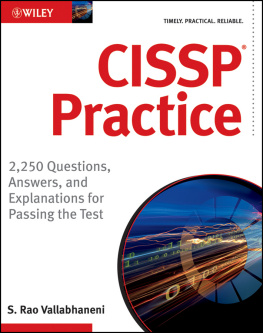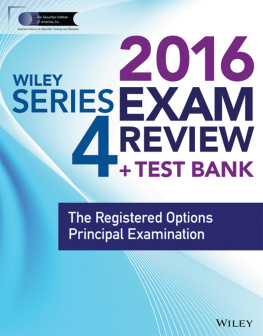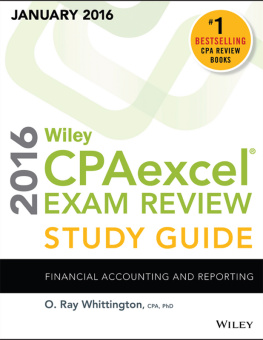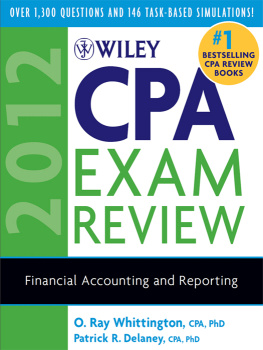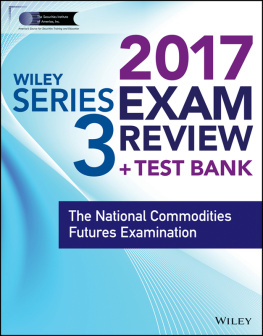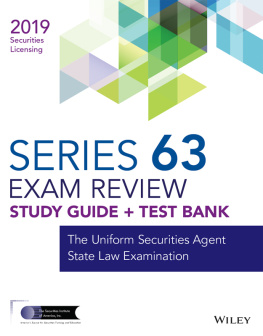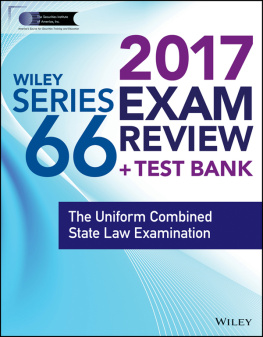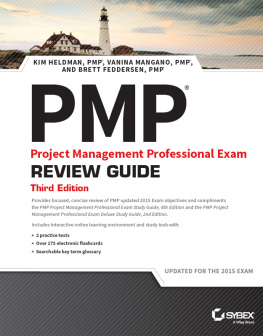Cover image: John Wiley & Sons, Inc.
Cover design: John Wiley & Sons, Inc.
Copyright 2016 by S. Rao Vallabhaneni. All rights reserved.
Published by John Wiley & Sons, Inc., Hoboken, New Jersey.
Published simultaneously in Canada.
No part of this publication may be reproduced, stored in a retrieval system, or transmitted in any form or by any means, electronic, mechanical, photocopying, recording, scanning, or otherwise, except as permitted under Section 107 or 108 of the 1976 United States Copyright Act, without either the prior written permission of the Publisher, or authorization through payment of the appropriate per-copy fee to the Copyright Clearance Center, Inc., 222 Rosewood Drive, Danvers, MA 01923, (978) 750-8400, fax (978) 646-8600, or on the Web at www.copyright.com . Requests to the Publisher for permission should be addressed to the Permissions Department, John Wiley & Sons, Inc., 111 River Street, Hoboken, NJ 07030, (201) 748-6011, fax (201) 748-6008, or online at www.wiley.com/go/permissions .
Limit of Liability/Disclaimer of Warranty: While the publisher and author have used their best efforts in preparing this book, they make no representations or warranties with respect to the accuracy or completeness of the contents of this book and specifically disclaim any implied warranties of merchantability or fitness for a particular purpose. No warranty may be created or extended by sales representatives or written sales materials. The advice and strategies contained herein may not be suitable for your situation. You should consult with a professional where appropriate. Neither the publisher nor author shall be liable for any loss of profit or any other commercial damages, including but not limited to special, incidental, consequential, or other damages.
For general information on our other products and services or for technical support, please contact our Customer Care Department within the United States at (800) 762-2974, outside the United States at (317) 572-3993 or fax (317) 572-4002.
Wiley publishes in a variety of print and electronic formats and by print-on-demand. Some material included with standard print versions of this book may not be included in e-books or in print-on-demand. If this book refers to media such as a CD or DVD that is not included in the version you purchased, you may download this material at http://booksupport.wiley.com . For more information about Wiley products, visit www.wiley.com .
Library of Congress Cataloging-in-Publication Data:
ISBN 978-1-119-24217-8 (Paperback)
ISBN 978-1-119-24224-6 (ebk)
ISBN 978-1-119-24223-9 (ebk)
ISBN 978-1-119-24140-9 (Part 1)
ISBN 978-1-119-24207-9 (Part 2)
ISBN 978-1-119-24206-2 (Set)
Preface
The Certified Internal Auditor (CIA) Examination is a program of The Institute of Internal Auditors (IIA), Inc. The CIA Examination certifies a person as a professional internal auditor and is intended to measure the knowledge, skills, and competency required in the field of internal auditing. The CIA designation is the mark of an expert in internal auditing. The new exam syllabus, effective from the middle of 2013, tests knowledge at two levels of comprehensionproficiency and awareness, as indicated in the IIAs content specifications outlines ( www.theiia.org ). These levels require allocating more preparation time to proficiency-level topics and less time to awareness-level topics. The scope of the new CIA Exam consists of three parts, which are divided into 14 domains; there are three domains in Part 1, three domains in Part 2, and eight domains in Part 3.
A series of review books has been prepared for the candidate to utilize for all three parts of the new CIA Exam. Each parts review book includes a comprehensive coverage of the subject matter (theory) based on the new exam syllabus followed by some sample practice multiple-choice (M/C) questions with answers and explanations (practice). The sample practice M/C questions included in the review book are taken from Wileys Web-based online test software to show you the flavor of the questions. Each parts review book contains a glossary section, which is a good source for answering M/C questions on the CIA Exam.
The scope of the Part 3 review book covers internal audit knowledge elements. It has eight domains: Domain 1 deals with governance and business ethics. Domain 2 addresses risk management. Domain 3 covers organizational structure, business processes, and risks. Domain 4 deals with communication. Domain 5 addresses management and leadership principles. Domain 6 focuses on information technology (IT) and business continuity. Domain 7 addresses financial management. Domain 8 focuses on global business environment. The Part 3 review book contains 140 sample practice M/C questions with answers and explanations, and a glossary section.
The objective of this review book is to provide single-source, comprehensive review materials to assist the CIA Exam candidate in successfully preparing for the exam. The major highlights are presented next.
- Easy to navigate, comprehend, learn, and apply the subject matter since it was written from a students perspective in a textbook style and format.
- The review book contains fully developed theories and concepts with complete thoughts as opposed to mere outlines. The candidate needs to know more than outlines to pass the difficult CIA Exam.
- Each theoretical domain in the review book is shown with a range of percentages to indicate the relative weights given to that domain in the exam. Candidates are expected to plan their study time in proportion to the relative weights suggested (i.e., more time and effort to higher percentages, and vice versa).
- CIA Exam content specifications included at the beginning of the book shows the level of difficulty for each topic in the CIA Exam expressed as (A) for Awareness and (P) for Proficiency. Awareness means candidates must exhibit awareness (i.e., knowledge of terminology and fundamentals) in these topic areas. Proficiency means candidates must exhibit proficiency (i.e., thorough understanding and ability to apply concepts) in these topic areas.
- Greater use of comparisons and contrasts of subject matter make the key concepts come alive by providing lasting impressions. These comparisons show interrelationships between key concepts.
These review books focus on the studentthe candidate preparing for the CIA exam. It provides a positive learning experience for candidates by helping them to remember what they read and recall the subject matter through the use of tree diagrams, line drawings, memory aids (key concepts to remember), tables, charts, and graphic text boxes. In other words, an attempt has been made to bring life to static words through visual aids and compare and contrast approaches (i.e., which is what). The positive learning experience system provided through visual aids and memories will enable candidates to form long-lasting study impressions of the subject matter in their minds. In short, this book is student-focused and learning-oriented.
The aim of these books is to make learning easier, more convenient, and more enjoyable for our customer, the student. A great deal of planning and thought went into the creation of these books with the single goal of making the students study program (whether individual or group) more relevant and more meaningful. It is hoped that these books meet or exceed the students expectations in terms of quality, content coverage, and presentation of the subject matter.


